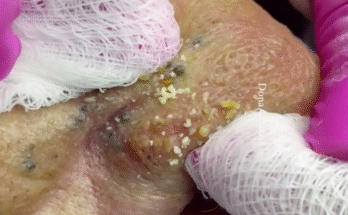Navigating Cancer Treatment: A Comprehensive Guide
Cancer treatment is a complex journey, tailored to each individual and their specific diagnosis. Understanding the various treatment options available is crucial for patients and their families. This guide provides a detailed overview of the major approaches, highlighting their purposes, applications, and potential side effects.
Understanding the Landscape of Cancer Treatment
Before delving into specific treatments, it’s vital to understand the factors influencing a treatment plan. These factors include:
Key Diagnostic Factors
- Tumor Type & Nature: Is the tumor benign (non-cancerous) or malignant (cancerous)? This fundamental distinction drastically alters treatment strategies.
- Tumor Location & Size: The location of the tumor within the body dictates the feasibility and approach of certain treatments, such as surgery. The size also impacts the treatment strategy.
- Stage & Grade: The stage refers to the extent of cancer spread, while the grade indicates how abnormal the cancer cells appear under a microscope. Both significantly impact prognosis and treatment choice.
- Overall Patient Health: A patient’s general health, including pre-existing conditions, significantly impacts their ability to tolerate aggressive treatments.
The Spectrum of Cancer Treatment Options
Numerous treatment modalities exist, often used in combination to maximize effectiveness. Let’s explore each in detail:
1. Surgery: The Surgical Approach
Surgical removal aims to physically excise the tumor from the body. This is often the preferred method for localized solid tumors, such as those found in the breast, brain, or colon. Surgery frequently serves as the primary treatment but is often followed by adjuvant therapies like chemotherapy or radiation to eradicate any remaining microscopic cancer cells. The extent of surgery depends heavily on the tumor’s size, location, and invasiveness.
2. Radiation Therapy: Harnessing Energy to Fight Cancer
Radiation therapy uses high-energy radiation, like X-rays or protons, to damage or destroy cancer cells. This approach comes in two main forms: external beam radiation, delivered from a machine outside the body, and brachytherapy, which involves placing radioactive material directly within or near the tumor. Radiation therapy can be curative for localized cancers, used post-surgery to eliminate residual cancer cells (adjuvant therapy), or provide palliative care to manage symptoms in advanced stages.
3. Chemotherapy: Systemic Cancer Treatment
Chemotherapy employs powerful drugs designed to target rapidly dividing cells, including cancer cells. Administered intravenously or orally, chemotherapy can be a primary treatment for certain cancers or used as adjuvant or neoadjuvant therapy (before surgery to shrink tumors). While highly effective, chemotherapy can also affect healthy cells, leading to side effects such as nausea, fatigue, and hair loss. The specific drugs and their administration schedule are tailored to the individual and their cancer type.
4. Immunotherapy: Empowering the Immune System
Immunotherapy harnesses the body’s own immune system to fight cancer. This innovative approach includes checkpoint inhibitors, which remove the “brakes” on the immune system, allowing it to more effectively target cancer cells, and CAR T-cell therapy, a more targeted approach involving genetically modifying a patient’s T-cells to specifically attack cancer cells. Immunotherapy has shown remarkable success in treating melanoma, lung cancer, and certain blood cancers, with ongoing research expanding its applications.
5. Targeted Therapy: Precision Medicine in Oncology
Targeted therapy focuses on specific molecules or pathways crucial for cancer cell growth. These therapies work by inhibiting enzymes or proteins that fuel cancer cell proliferation or by blocking signals that allow uncontrolled growth. This precision approach requires genetic testing to identify specific mutations or biomarkers present in the cancer cells, ensuring the therapy targets the right pathway. Examples include HER2 inhibitors for breast cancer and EGFR inhibitors for lung cancer.
6. Hormone Therapy: Targeting Hormone-Driven Cancers
Hormone therapy is utilized for cancers whose growth is fueled by hormones, such as breast and prostate cancer. It aims to either reduce hormone production in the body or block hormone receptors on cancer cells, effectively starving the cancer of its fuel source.
7. Observation (Watchful Waiting): A Conservative Approach
In some cases, particularly with slow-growing or benign tumors, watchful waiting is a viable option. This approach involves closely monitoring the tumor without immediate intervention, opting for treatment only if the tumor progresses or causes symptoms.
8. Adjuvant and Neoadjuvant Therapies: Strategic Timing
Adjuvant therapy refers to treatments administered after the primary treatment (like surgery) to reduce the risk of cancer recurrence. Neoadjuvant therapy, conversely, is given before the primary treatment to shrink the tumor, making the primary treatment more effective.
9. Palliative Care: Enhancing Quality of Life
Palliative care focuses on improving the quality of life for patients with advanced cancer. It aims to relieve symptoms such as pain, nausea, and fatigue, enhancing comfort and well-being, regardless of the presence of curative treatment.
This comprehensive guide provides a foundational understanding of cancer treatment options. Always consult with your oncologist for personalized advice and treatment planning. They will consider all factors specific to your situation to create the most effective and suitable treatment strategy.



